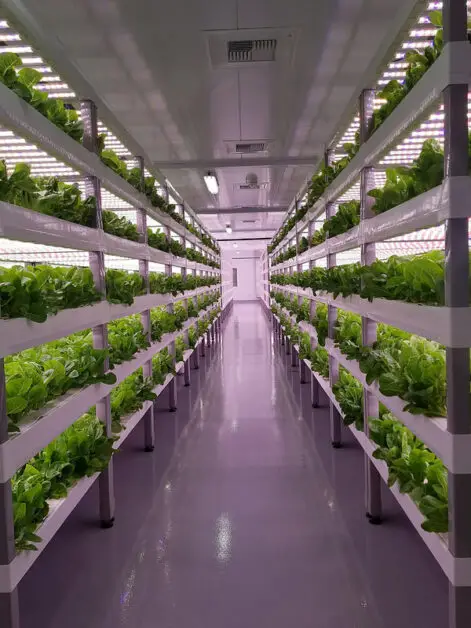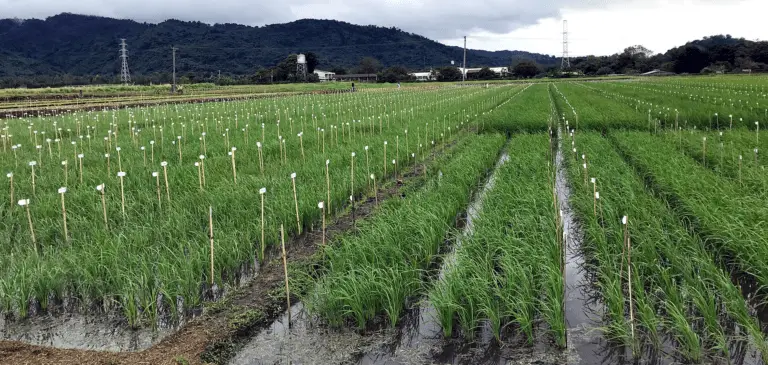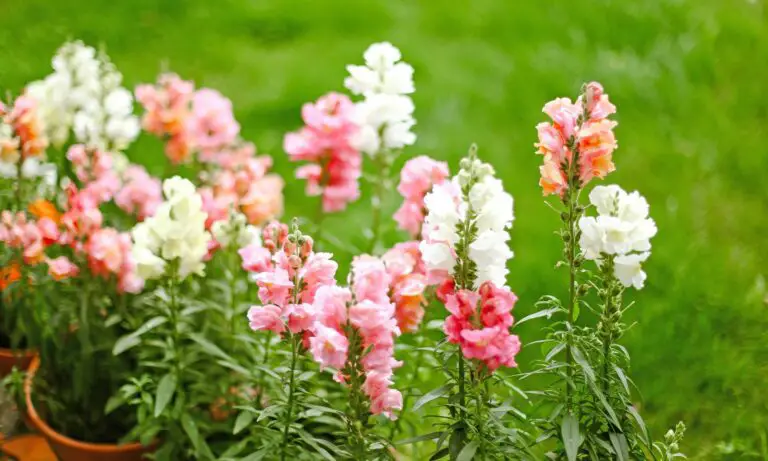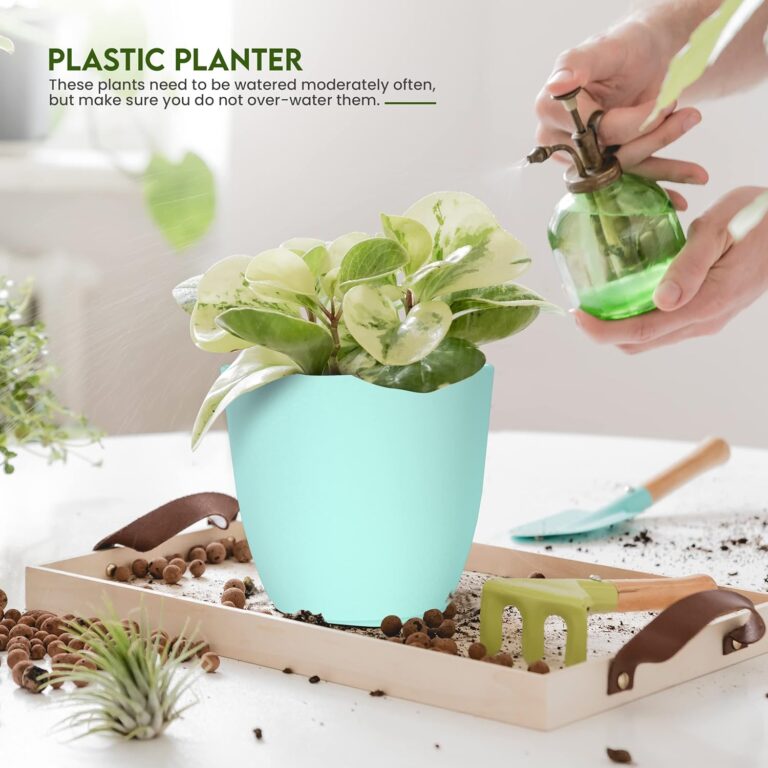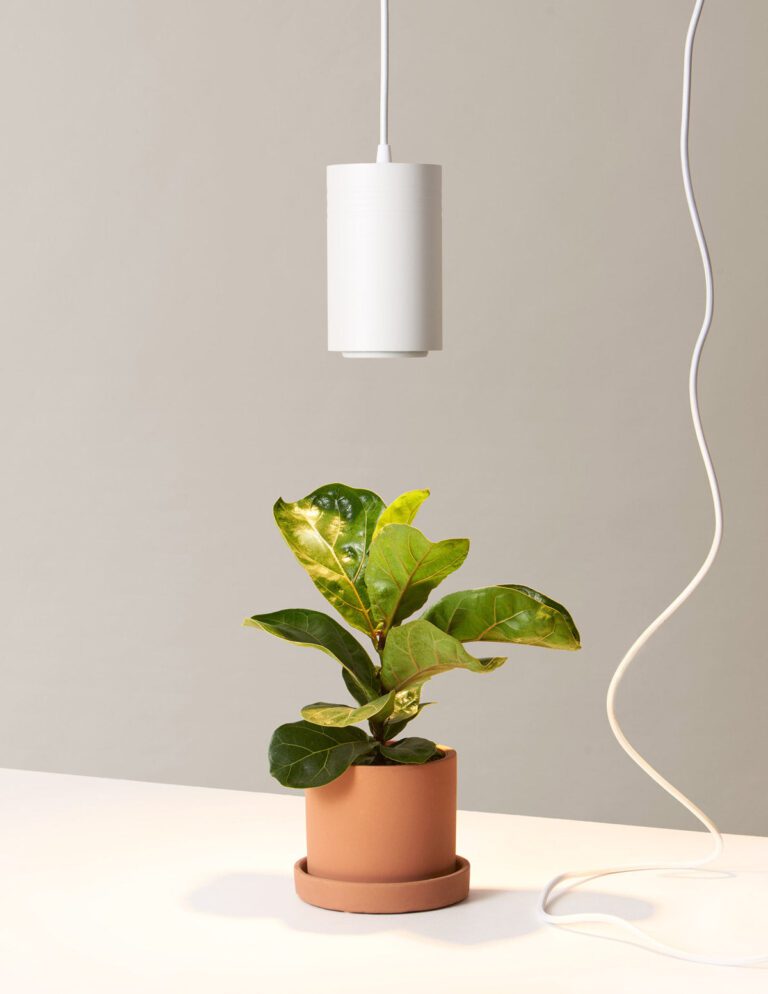How to Maximize Your Space and Yield with Vertical Growing Methods
Looking to maximize your gardening space while boosting your yield? Vertical growing methods might just be the answer you’ve been searching for. Did you know that utilizing vertical space can increase your crop yield by up to 3 times compared to traditional methods? Imagine the possibilities of growing your own fresh produce, even in the smallest of spaces like urban balconies or cramped backyards.
In this blog, we’ll dive into the world of vertical gardening, exploring innovative techniques and practical tips to help you make the most out of your available space. Get ready to revolutionize your gardening game and unlock the full potential of your green thumb!
Table of Contents
Understanding Vertical Growing: An Overview
Vertical growing is an innovative technique that is revolutionizing the world of gardening. Rather than spreading out horizontally, plants are cultivated in a vertically stacked manner, making the most efficient use of limited space. This method is particularly popular in urban areas where land is scarce and expensive.
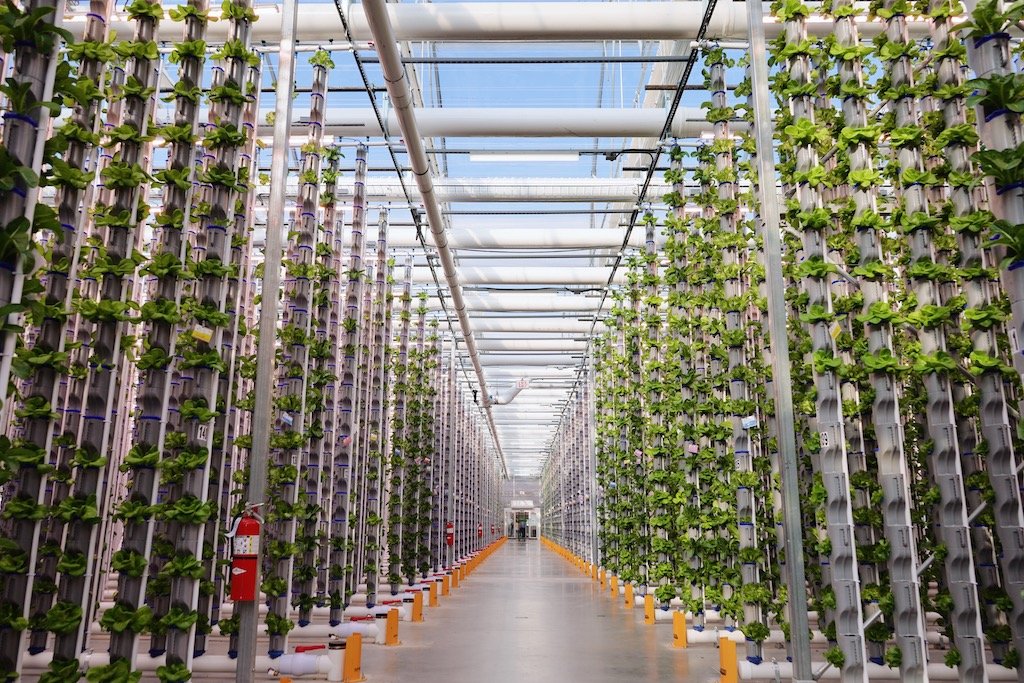
- Space Efficiency:
- Vertical growing maximizes space utilization.
- Gardeners can cultivate more plants in a small area.
- Ideal for urban environments with limited land availability.
- Optimal Sunlight Exposure:
- Stacking plants vertically ensures better access to sunlight.
- Improved growth and higher yields result from optimal light exposure.
- Aesthetic and Functional Designs:
- Vertical gardens allow for creative and eye-catching designs.
- Gardeners can experiment with unique arrangements.
In summary, vertical growing systems offer efficient use of space, improved sunlight exposure, and the chance to create stunning garden displays! 🌱🌞🌿
Benefits of Vertical Growing Systems
Vertical growing systems offer numerous benefits to gardening enthusiasts, making them an excellent choice for those looking to maximize space and efficiency in their gardens.
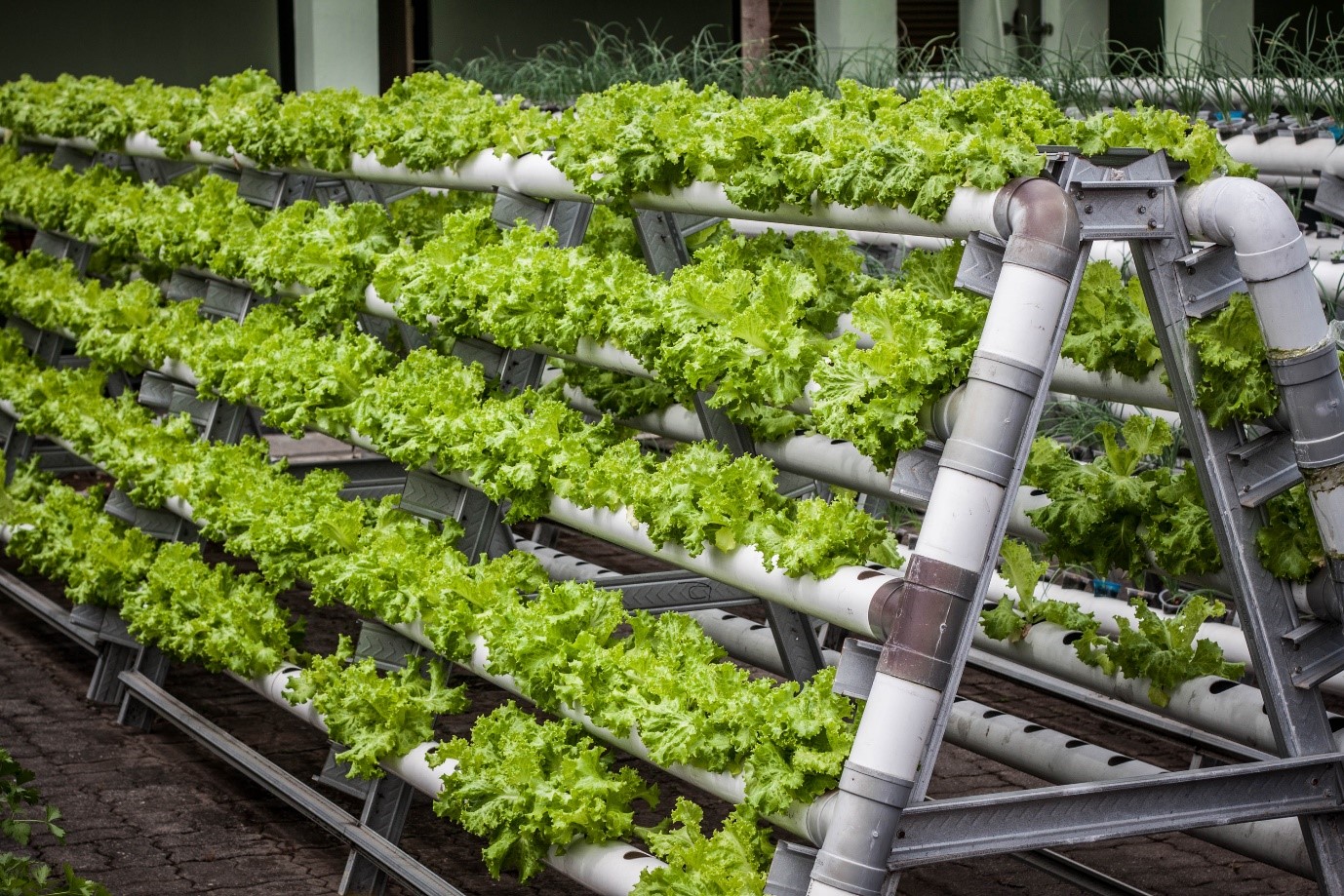
- Optimized Space Utilization: Vertical growing systems enable gardeners to grow more plants in a smaller footprint, making them perfect for urban environments or limited gardening spaces.
- Improved Air Circulation: These systems provide better ventilation, reducing the risk of diseases and pests by minimizing contact between plants and the ground.
- Reduced Need for Pesticides: By preventing soil-borne diseases, vertical growing systems promote plant health and diminish reliance on harmful pesticides.
- Enhanced Control Over Growing Conditions: Gardeners can fine-tune light distribution, watering, and nutrient management by strategically arranging plants vertically, leading to healthier and more robust growth.
- Conclusion: Vertical growing systems offer numerous and significant benefits, including maximizing space utilization, improving air circulation, and providing greater control over growing conditions, making them invaluable for gardening enthusiasts.
By incorporating vertical growing techniques into their gardening practices, individuals can enjoy the rewards of increased production, healthier plants, and a more efficient use of resources.
Selecting the Right Vertical Growing System for Your Space

When it comes to vertical growing, selecting the right system for your space is crucial for the success of your garden. With a wide range of vertical growing systems available, it can be overwhelming to choose the one that best suits your needs. However, by considering a few key factors, you can make an informed decision.
- Assess Space Size and Layout: Determine the dimensions and configuration of your available space to choose a vertical growing system that fits comfortably.
- Consider System Dimensions: Evaluate the height, width, and depth of the system to ensure it integrates well without compromising other garden elements.
- Plan for Plant Capacity: Decide how many plants you intend to grow and consider potential future expansion to choose a system with suitable capacity and scalability.
- Evaluate Specific Space Requirements: Account for access to natural light, electricity, and plumbing to ensure the system meets your space’s unique requirements and limitations.
- Tailor to Gardening Goals: Select a vertical growing system that aligns with your specific space and gardening objectives for optimal results.
By carefully considering these factors, you can select a vertical growing system that is tailored to your unique space and gardening goals.
I recently tried the Stackable Strawberry, Flower, and Vegetable Planter and found it to be an excellent addition to my small balcony garden. Its space-saving, vertical design allowed me to grow a variety of plants without cluttering my limited area. The stackable feature is incredibly convenient, letting me expand my garden as needed. The planter is made from durable, weather-resistant plastic, which has withstood various weather conditions.
However, setting it up required a bit of patience, and I had to ensure it was stable to handle the weight when fully planted. Additionally, while the built-in drainage system is a plus, achieving even water distribution across all levels took some trial and error. Despite these minor issues, it’s a versatile and aesthetically pleasing solution for any urban gardener.
- Space-Saving Design: Perfect for small gardens, patios, or balconies.
- Versatile: Suitable for growing a variety of plants including strawberries, flowers, and vegetables.
- Stackable: Modular design allows for easy expansion and customization.
- Durable Material: Made from sturdy, weather-resistant plastic.
- Efficient Watering: Built-in drainage system helps prevent overwatering and promotes healthy root growth.
- Aesthetic Appeal: Adds a decorative touch to any gardening space.
- Assembly Required: Some users might find the initial setup a bit tricky.
- Weight Management: When fully planted, it can become quite heavy and may need stable support.
- Limited Depth: Not ideal for plants requiring deep root systems.
- Water Distribution: Ensuring even water distribution across all levels can be challenging.
- Price: Slightly more expensive compared to traditional planters.
Essential Components for Successful Vertical Growing
To ensure successful vertical growing, there are several essential components that you need to consider.
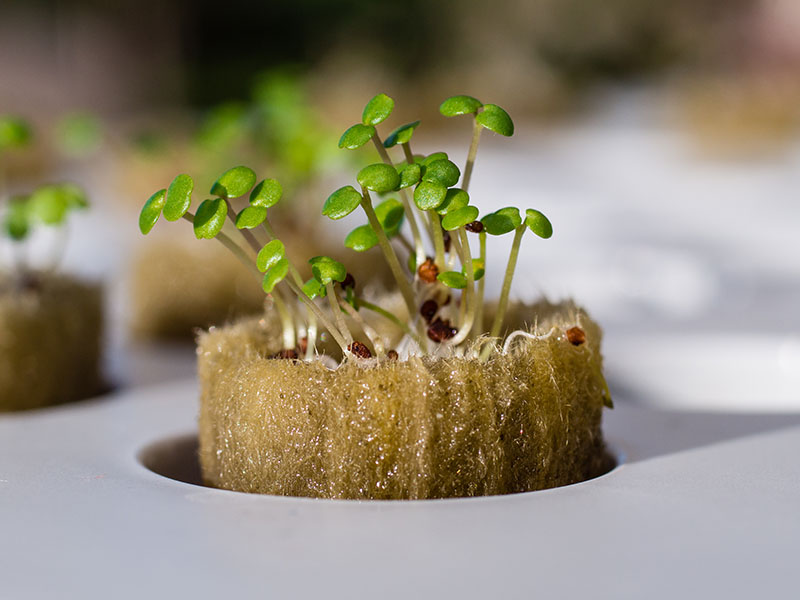
- Sturdy Support Structure:
- Choose a reliable trellis system, wall-mounted frame, or specialized structure.
- Ensure it can hold the weight of plants and provides stability.
- Selecting Growing Medium:
- Use alternative mediums like coco coir, rockwool, or aeroponics.
- These provide support, proper drainage, and efficient nutrient circulation.
- Efficient Irrigation:
- Implement drip irrigation, hydroponic systems, or automated watering.
- Ensure each plant receives the right water and nutrients.
- Adequate Lighting:
- LED grow lights are energy-efficient and provide the right spectrum.
- Position lights correctly and use timers for optimal photosynthesis.
By selecting a sturdy support structure, using the appropriate growing medium, implementing an efficient irrigation system, and providing adequate lighting, you will have the essential components in place for successful vertical growing. These elements will lay the foundation for healthy, productive plants that can thrive in a vertical garden setting.
I recently upgraded to the Spider Farmer SF-2000 LED Grow Light, and it has been a game-changer for my indoor garden. The high-efficiency Samsung LM301B diodes and full-spectrum light have significantly improved the growth and health of my plants. I particularly appreciate the dimmable feature, which allows me to customize the light intensity based on the growth stage. The light distribution is even, reducing the risk of hot spots, and the energy consumption is impressively low for its output, making it cost-effective in the long run.
However, the initial cost was a bit steep, and the setup required some careful adjustments to achieve the best results. Despite these minor drawbacks, the quiet operation and high-quality build make it a worthwhile investment for serious indoor gardeners.
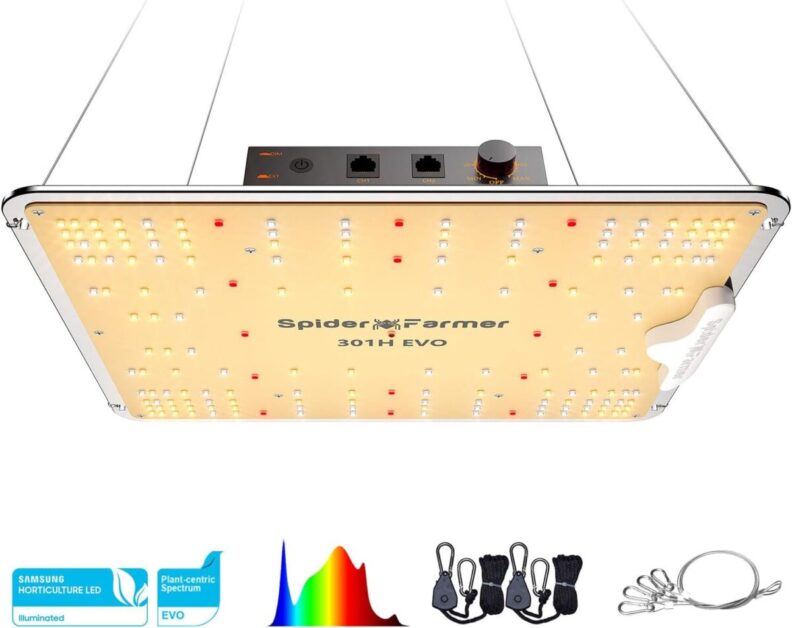
✅ Full Spectrum Light: Provides full-spectrum light, ideal for all stages of plant growth from seedling to harvest.
✅ Dimmable: Adjustable light intensity with a dimmer knob, giving flexibility to customize light output.
✅ Well-Distributed Light: Evenly distributes light across the growing area, reducing the risk of hot spots.
✅ Energy Efficient: Consumes only 200W while delivering a high output, making it cost-effective.
✅ Quality Components: Features a durable MeanWell driver, enhancing longevity and performance.
✅ Quiet Operation: Passive cooling system with no noisy fans, ensuring quiet operation.
❌ Coverage Area: Best suited for smaller grow areas; larger spaces might require additional units.
❌ Heat Management: While passive cooling is efficient, the unit can still get warm to the touch.
❌ Installation: Setup might be slightly complex for beginners without prior experience.
❌ Hanging Height: Needs precise adjustment for optimal results, which might be challenging for new users.
Optimizing Light Distribution in Vertical Gardens
To ensure optimal growth and productivity in vertical gardens, it is crucial to optimize light distribution. Light is a vital factor for photosynthesis, the process by which plants convert light energy into chemical energy, fueling their growth and development. Without adequate light, plants may become stunted, weak, or even fail to thrive altogether.
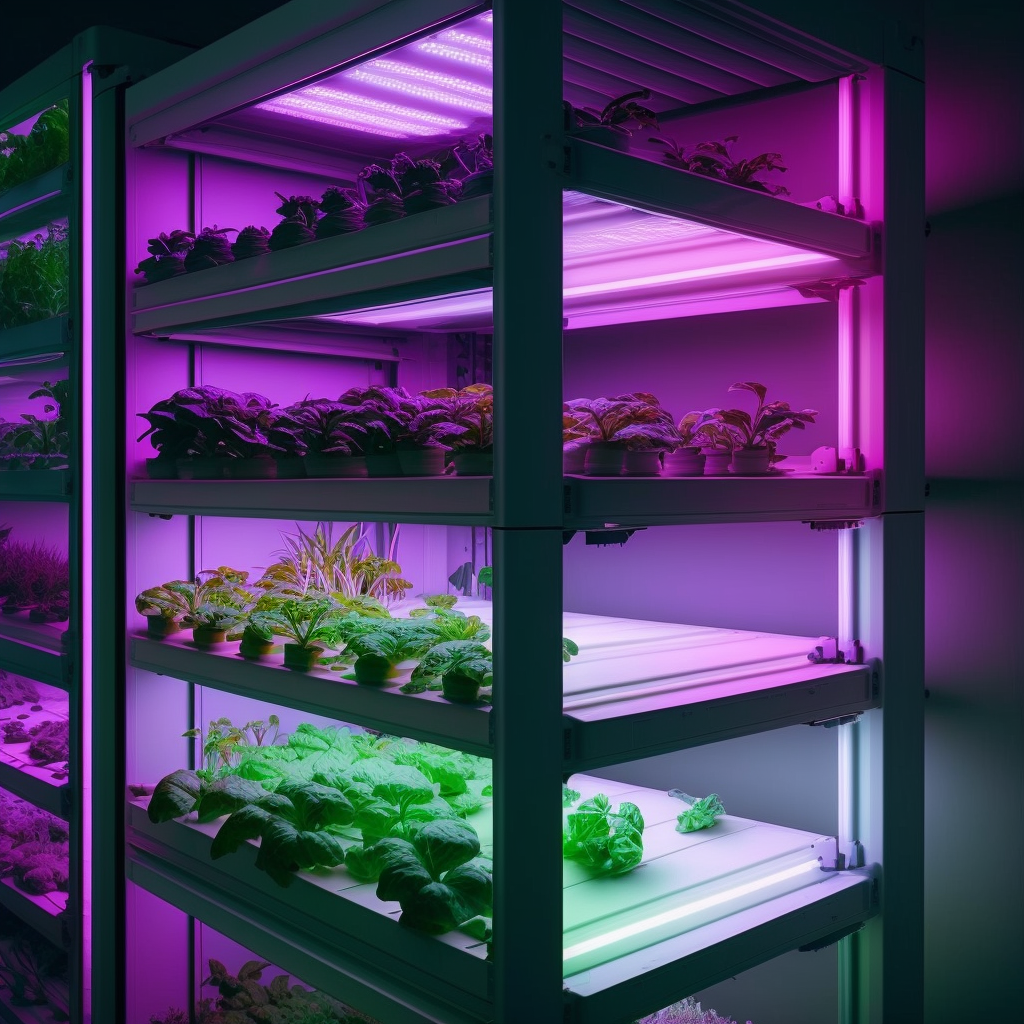
- Reflective Surfaces:
- Use mirrors or white panels strategically around the garden.
- Bounce light back onto plants to ensure even distribution.
- Particularly useful in areas with limited sunlight or uneven lighting.
- Adjustable Light Fixtures:
- Choose fixtures with adjustable settings (intensity and direction).
- Customize light distribution based on plant needs.
- Plant-Specific Considerations:
- Understand the light requirements of each plant species.
- Tailor light distribution accordingly for healthy growth.
By implementing these strategies, gardening enthusiasts can create thriving vertical gardens that provide an abundance of fresh produce and a visually stunning display of flourishing greenery.
Maximizing Space Efficiency through Vertical Growing Techniques
When it comes to maximizing space efficiency in vertical growing, there are several techniques that can be employed to make the most of limited space.
- Trellises or Supports: Train plants to grow vertically, maximizing vertical space and allowing more plants in limited areas.
- Hanging Baskets: Use hanging baskets to take advantage of overhead space, stacking plants vertically.
- Tiered Shelving Systems: Implement tiered shelving to optimize both horizontal and vertical space, accommodating more plants efficiently.
- Selective Planting: Choose plants with similar light and water needs to create a cohesive and thriving vertical garden.
Choosing the Right Plants for Vertical Growing
When it comes to selecting the right plants for vertical growing, there are several factors to consider.
- Choose the Right Plants:
- Not all plants are suitable for vertical gardening. Opt for plants with shallow root systems and compact growth habits.
- Leafy greens and herbs are great choices for shadier areas, while flowering plants and fruiting vegetables need more sunlight.
- Select the Ideal Location:
- Consider the available light conditions. Some plants thrive in low light, while others require more sun.
- Indoor vertical gardens should use plants that can adapt to controlled environments, while outdoor gardens need hardier plants.
- Use Lightweight Soil:
- Lightweight soil won’t weigh down your structure or cause drainage problems.
- Look for potting mix formulated for container gardening.
- Provide Support:
- Install trellises, stakes, or other vertical structures to support your plants as they grow.
- Proper support ensures healthy growth and prevents sprawling.
- Regular Watering:
- Vertical gardens can dry out quickly due to increased exposure. Water your plants consistently to keep them hydrated.
- Prune and Maintain:
- Regularly prune your plants to encourage healthy growth and prevent overcrowding.
- Remove dead or diseased foliage promptly.
By carefully considering these factors, you can ensure that you choose the right plants for your vertical growing system, leading to a successful and rewarding gardening experience.
Effective Watering and Nutrient Management in Vertical Gardens
Watering and nutrient management are crucial aspects of maintaining a successful vertical garden. In vertical growing systems, plants rely on a nutrient-rich water solution instead of traditional soil. Proper watering and nutrient management ensure that plants receive the necessary elements for optimal growth and productivity.

- Precision in Watering:
- Overwatering: Avoid stagnant water and root rot.
- Underwatering: Prevent dehydration and stunted growth.
- Balance: Monitor moisture levels and adjust watering schedules.
- Automated Irrigation: Use systems with timers to ensure consistent watering and minimize human error.
- Nutrient Management:
- Nutrient Solutions: Provide balanced macro and micronutrients.
- Essential Elements: Ensure adequate nitrogen, phosphorus, and potassium.
- Monitoring: Regularly test and adjust the nutrient solution based on plant species needs.
- Summary:
- Effective Watering: Achieve the right balance to avoid over or underwatering.
- Nutrient Provision: Supply the necessary nutrients for optimal plant health.
- Automation and Monitoring: Use automated systems and precise monitoring to maintain consistency and optimize growth in vertical gardens.
Controlling Pests and Diseases in Vertical Growing Systems
Vertical growing systems offer a unique advantage in pest and disease control, as plants are elevated and less susceptible to ground-dwelling pests. However, it is still essential to implement proactive measures to maintain a healthy and thriving vertical garden.

- Proper Plant Selection:
- Choose resilient and diseases-resistant plant varieties.
- Minimize the risk of pest infestations from the start.
- Regular Monitoring and Inspection:
- Routinely check foliage, stems, and roots for signs of pests (e.g., chewed leaves, visible pests, excrement).
- Look for indications of diseases, such as discoloration, wilting, or abnormal growth.
- Address potential issues promptly to prevent spread and damage.
By staying vigilant and spotting problems early on, gardeners can take swift action to prevent further damage and protect the vertical garden’s overall health.
Maintaining Proper Air Circulation in Vertical Gardens
Proper air circulation is crucial for maintaining a healthy and thriving vertical garden. In a vertical gardening system, plants are stacked in layers, which can create challenges in terms of air movement. Insufficient air circulation can lead to stagnant air, increased humidity, and the growth of mold and pests, all of which can be detrimental to the health of the plants.
Position your vertical garden in an area with adequate natural airflow.
Place it near a window, balcony, or any other source of ventilation.
Consider adding fans or ventilation systems to enhance air movement.
Strategically place them to avoid direct damage to plants.
Inspect and clean fans or ventilation systems to prevent blockages.
Dust buildup can hinder airflow and affect plant health.
| Maintaining Proper Air Circulation in Vertical Gardens | Key Practices for Improved Air Flow |
|---|---|
| 1. Plant Spacing and Arrangement | – Adequate Spacing: Plant with sufficient gaps to allow air movement between plants. |
| – Strategic Arrangement: Place larger plants at the bottom and smaller ones at the top to avoid overshadowing. | |
| 2. Selecting Appropriate Plants | – Choose Well-Balanced Varieties: Select plants with compact growth habits to prevent overcrowding. |
| – Consider Airy Plants: Opt for plants with open structures that allow air to pass through easily. | |
| 3. Pruning and Regular Maintenance | – Remove Excess Foliage: Prune regularly to remove excess foliage and maintain a balanced canopy. |
| – Deadheading Flowers: Remove spent flowers to redirect energy and improve air circulation. | |
| 4. Vertical Garden Design | – Open Frameworks: Design vertical structures with open frameworks to allow air to move freely. |
| – Avoid Dense Planting: Plan the layout to avoid overly dense plantings that impede air circulation. | |
| 5. Fan or Ventilation System | – Install Fans: Consider adding fans or a ventilation system to enhance air movement within the vertical garden. |
| – Timer Controls: Use timers to regulate fan operation, especially in enclosed or indoor vertical gardens. | |
| 6. Regular Inspection for Pests and Diseases | – Early Detection: Regularly inspect plants for pests and diseases, addressing issues promptly to prevent further complications. |
| – Isolate and Treat: Isolate affected plants to prevent the spread of pests or diseases to nearby plants. | |
| 7. Positioning in Relation to Sunlight | – Consider Sun Exposure: Position the vertical garden to receive adequate sunlight without creating excessively hot or shaded areas. |
| – Rotate Plants: Rotate plants occasionally to ensure all sides receive sunlight and prevent stagnation. | |
| 8. Mulching and Soil Aeration | – Use Mulch Sparingly: Apply mulch to retain moisture but avoid excessive mulching that may impede soil aeration. |
| – Aerate Soil Regularly: Use aerating tools to keep the soil loose, promoting healthy root development and air penetration. |
Harvesting and Pruning Techniques for Vertical Gardens
Harvesting and pruning are essential techniques for maintaining the health and productivity of vertical gardens. When it comes to harvesting, timing is everything. It is important to monitor the ripeness of your plants closely and pick them at the peak of their flavor and nutritional value.

Certainly! Here are some key points about crop readiness and pruning in vertical gardening:
- Crop Readiness Signs:
- Different crops exhibit specific signs of readiness.
- For example:
- Tomatoes: Harvest when they have a vibrant red color.
- Lettuce: Harvest when outer leaves are mature but still tender.
- Importance of Pruning:
- Pruning controls growth and shape.
- Benefits include better air circulation, sunlight penetration, and overall plant health.
- Remove dead, damaged, or diseased foliage.
- Thin out excessive growth and overcrowded branches.
- Use clean and sharp tools for pruning.
By incorporating proper harvesting and pruning techniques, vertical gardeners can ensure healthy crops with higher yields and extend the lifespan of their growing systems.
Troubleshooting Common Issues in Vertical Growing
When it comes to vertical growing, like any other gardening method, there can be challenges along the way. However, being aware of these common issues and having a plan to address them will ensure that your vertical garden thrives. Here, we will discuss some troubleshooting tips for the most common problems faced in vertical growing.
- Ensure Proper Water Drainage:
- Prevent root rot and diseases by having effective drainage.
- Allow excess water to flow away easily.
- Monitor moisture levels and adjust watering schedules to avoid overwatering.
- Incorporate aeration techniques (e.g., air pumps, adding perlite ) to improve oxygen levels in the root zone.
- Address Nutrient Deficiency or Imbalance:
- Provide a well-balanced nutrient solution due to limited root space.
- Regularly test pH and EC levels to maintain optimal plant nutrient uptake.
- Use slow-release fertilizers or organic amendments for a steady nutrient supply.
- Monitor plant growth and early signs of nutrient deficiencies (e.g., yellowing leaves, stunted growth) and address promptly.
| Troubleshooting Common Issues in Vertical Growing | Common Issues | Solutions |
|---|---|---|
| 1. Poor Drainage | – Waterlogging: Excess water accumulation in the growing system. | – Install Drainage: Ensure proper drainage with adequate holes in containers or use a well-draining growing medium. |
| – Root Rot Risk: Stagnant water increases the risk of root rot. | – Use Raised Beds: Elevate plant containers or beds for improved drainage. | |
| 2. Uneven Watering | – Dry or Soggy Areas: Inconsistent water distribution within the vertical setup. | – Implement Drip Systems: Use drip irrigation for even and controlled water delivery. |
| – Plant Stress: Plants in dry areas may experience stress and nutrient deficiencies. | – Monitor Moisture Levels: Regularly check soil moisture and adjust watering accordingly. | |
| 3. Insufficient Light | – Shaded Sections: Some plants receive insufficient light. | – Optimize Light Placement: Adjust the vertical structure or use supplemental lighting for shaded areas. |
| – Stunted Growth: Inadequate light hampers overall plant growth. | – Use Reflective Materials: Install reflective surfaces to redirect light to darker areas. | |
| 4. Overcrowding and Competition for Resources | – Stunted Growth: Competition among plants for nutrients and space. | – Prune and Thin: Regularly prune and thin out plants to prevent overcrowding. |
| – Increased Disease Risk: Overcrowded conditions may promote disease spread. | – Maintain Plant Spacing: Ensure proper spacing between plants to reduce disease risk. | |
| 5. Nutrient Deficiencies | – Yellowing Leaves: Signs of nutrient deficiencies in plants. | – Regular Feeding: Implement a regular fertilization schedule to address nutrient needs. |
| – Reduced Yield: Lack of essential nutrients affects overall productivity. | – Soil Testing: Conduct soil tests to identify specific nutrient deficiencies and adjust fertilizer accordingly. | |
| 6. Pests and Diseases | – Leaf Damage: Presence of pests or symptoms of diseases. | – Integrated Pest Management (IPM): Implement IPM practices, including beneficial insects and organic treatments. |
| – Wilting or Yellowing: Indications of potential diseases. | – Prune Affected Areas: Remove and dispose of infected plant parts promptly. | |
| 7. Structural Stability Issues | – Sagging or Tilting: The vertical structure may show signs of instability. | – Reinforce Support: Add additional support or anchors to stabilize the structure. |
| – Risk of Collapse: Structural issues may pose a risk of collapse. | – Regular Inspections: Conduct routine inspections and address structural concerns immediately. | |
| 8. Temperature Extremes | – Heat Stress: Plants may suffer from excessive heat in certain areas. | – Shade or Ventilate: Provide shade or improve ventilation to reduce heat stress. |
| – Cold Damage: Vulnerable plants may experience damage in colder zones. | – Use Protective Covers: Employ covers or cloths during cold periods to protect plants. |
Inspiring Vertical Gardening Ideas and Examples
Vertical gardening offers endless possibilities for creative and innovative plant arrangements that can transform any space into a lush and vibrant oasis. From small balcony gardens to sprawling urban walls, the following examples will inspire and ignite your imagination, showcasing the beauty and ingenuity of vertical gardening.
- Musée du quai Branly, Paris:
- Designed by botanist Patrick Blanc, this living wall covers an impressive 800 square meters.
- Features over 15,000 plant specimens.
- Adds nature to the urban environment and serves as a living art piece.
- National Museum of Singapore:
- A three-story vertical garden that exemplifies versatility.
- Intricate combination of cascading flora down the walls.
- Provides a visually stunning backdrop and promotes calmness for museum visitors.
These examples highlight how vertical gardening can integrate nature into our surroundings, creating captivating displays. Let these inspiring examples ignite your creativity and encourage you to explore the limitless possibilities of vertical gardening in your own space.
Watch video for more information:
FAQ
What is vertical growing?
Vertical growing is a technique that involves growing plants in a vertical space, such as on walls, fences, or specially designed structures, instead of traditional horizontal gardens.
What are the benefits of vertical growing systems?
Vertical growing systems offer several benefits, including maximizing space efficiency, allowing for year-round gardening, reducing the risk of pests and diseases, and providing an aesthetically pleasing display.
How do I select the right vertical growing system for my space?
When selecting a vertical growing system, consider factors such as available space, sunlight exposure, water availability, and the types of plants you wish to grow. There are various options available, including wall-mounted planters, trellises, living walls, and hydroponic systems.
What are the essential components for successful vertical growing?
The essential components for successful vertical growing include sturdy support structures, quality growing medium, adequate irrigation systems, appropriate lighting, and proper ventilation.
How can I optimize light distribution in vertical gardens?
To optimize light distribution in vertical gardens, consider placing plants with similar light requirements together, using reflective materials to redirect light, and ensuring that no plants shade others excessively.
How can I maximize space efficiency through vertical growing techniques?
Maximize space efficiency through techniques such as using vertical trellises, utilizing hanging baskets, incorporating tiered planters, and employing vertical hydroponic systems.
How do I choose the right plants for vertical growing?
When choosing plants for vertical growing, consider their growth habits, light and water requirements, and the available space. Plants that naturally climb, have compact growth, or are suitable for hydroponics are often good choices for vertical gardens.
What is the best way to water and manage nutrients in vertical gardens?
Vertical gardens typically require frequent watering, especially those grown in containers. Proper watering techniques, such as drip irrigation or automated systems, should be used to ensure plants receive adequate moisture. Nutrients can be managed through regular fertilization or by incorporating a hydroponic system.
How can I control pests and diseases in vertical growing systems?
To control pests and diseases in vertical growing systems, practice good sanitation, regularly inspect plants for signs of infestation or disease, use organic pest control methods, and consider companion planting to deter pests.
Why is proper air circulation important in vertical gardens?
Proper air circulation is important in vertical gardens to prevent the buildup of moisture, reduce the risk of fungal diseases, and promote healthy plant growth. It can be achieved through natural air movement or by using fans or ventilation systems.
What are some effective harvesting and pruning techniques for vertical gardens?
Harvesting in vertical gardens involves picking ripe fruits, vegetables, or herbs as they mature. Pruning techniques include removing dead or diseased plant parts, directing the growth of climbing plants, and maintaining the overall shape and health of the plants.
What are some common issues that may occur in vertical growing and how can they be addressed?
Common issues in vertical growing include over or under watering, nutrient deficiencies or excesses, pest infestations, and diseases. These issues can be addressed by adjusting watering practices, providing appropriate fertilization, implementing pest control measures, and practicing good plant care and maintenance.
Can you provide some inspiring examples of vertical gardening ideas?
Sure! Some inspiring examples of vertical gardening ideas include creating a living wall with a variety of plant species, using vertical trellises to grow climbing vegetables like tomatoes or beans, constructing a vertical herb garden in a small space, or designing a vertical hydroponic system for indoor gardening.

Studied Agricultural Engineering-Plant Protection at University of California, Davis.
Head of Content writing team at Southelmontehydroponics.com

